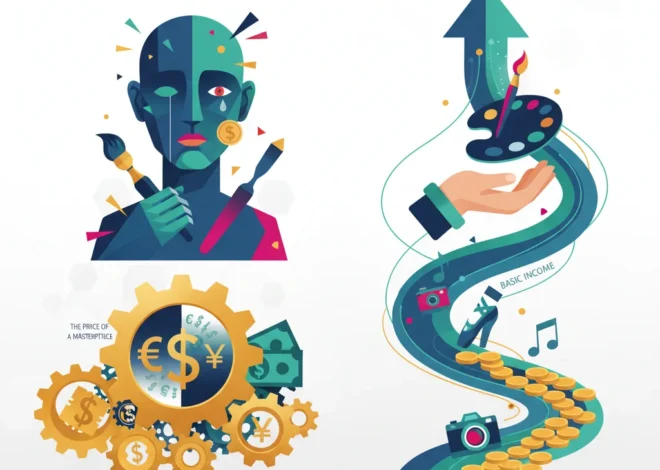
The Spice of Innovation: How FinTech and Blockchain are Cultivating the Future of a Multi-Billion Dollar Market
In the intricate world of global commodities, few items command the mystique and market volatility of cardamom. Dubbed the “Queen of Spices,” this aromatic pod is the third most expensive spice in the world, trailing only saffron and vanilla. Yet, for all its value, its journey from soil to shelf is fraught with peril. Cardamom is notoriously one of the most challenging crops to grow, highly sensitive to the slightest shifts in weather and soil conditions, a reality that creates immense risk for the farmers who cultivate it and unpredictable ripples throughout the global economy.
For investors, finance professionals, and business leaders, this volatility has traditionally marked cardamom as a high-risk asset class within the commodities market. The unpredictable yields and quality fluctuations directly impact pricing, supply chains, and the profitability of countless businesses in the food, beverage, and wellness industries. However, a technological revolution is quietly taking root in the spice fields of the world, one that promises to de-risk this ancient trade and unlock unprecedented value. By integrating cutting-edge financial technology (fintech), blockchain, and data analytics, we are witnessing the transformation of a fragile agricultural practice into a predictable, transparent, and highly investable ecosystem. This isn’t just about helping farmers; it’s about re-engineering the financial architecture of a global supply chain.
The Economics of a Temperamental Queen: Understanding Cardamom’s Volatility
To appreciate the scale of the technological intervention, one must first understand the fundamental economic challenges of cardamom cultivation. Unlike robust grains, cardamom is what agronomists call a “sensitive crop.” Its success hinges on a delicate balance of specific rainfall patterns, humidity, temperature, and soil pH. A slight delay in monsoon rains or an unexpected heatwave can devastate an entire harvest, wiping out a farmer’s annual income and sending shockwaves through the commodity trading markets.
This inherent agricultural risk creates a cascade of financial and logistical problems:
- Price Instability: Unpredictable supply leads to dramatic price swings. This volatility makes it difficult for food conglomerates to manage costs and for traders on the stock market to hedge positions effectively.
- Lack of Access to Finance: Traditional banking institutions are often hesitant to extend credit to cardamom farmers. Without reliable yield data, the risk of default is perceived as too high, trapping farmers in a cycle of debt with informal lenders who charge exorbitant interest rates.
- Inefficient Supply Chains: The journey from farm to consumer is often opaque, involving numerous intermediaries. This lack of transparency can lead to quality degradation, fraud (where inferior products are mixed in), and a disproportionate distribution of profits, with farmers receiving only a fraction of the final retail price.
- Information Asymmetry: Farmers often lack access to real-time market data, forcing them to sell their valuable produce to the first buyer at a dictated price, rather than one determined by fair market dynamics.
These factors combine to create a market that is inefficient, inequitable, and ripe for disruption. The core problem is a lack of reliable data—data about the soil, the weather, the crop’s health, its journey, and its market value. And where there is a data problem, technology offers a solution.
UK's Economic Engine Sputters: Why a Car Production Slump is a Red Flag for the Entire Economy
The Digital Harvest: A Four-Pillar Tech Solution
The emerging solution to cardamom’s challenges isn’t a single technology but a convergence of innovations that address every pain point from cultivation to consumption. This “Agri-FinTech” stack is built on four key pillars.
1. Precision Agriculture and IoT
The first step is de-risking the cultivation itself. Internet of Things (IoT) sensors are now being deployed in cardamom plantations to monitor critical variables in real-time. Soil moisture sensors, weather stations, and drone-based multispectral imaging provide a constant stream of data. This information is fed into AI-powered analytics platforms that can predict disease outbreaks, recommend optimal irrigation schedules, and forecast yields with increasing accuracy. For a farmer, this means shifting from reactive guesswork to proactive, data-driven decision-making. For an investor or a lender, this data provides the first verifiable evidence of a harvest’s potential, transforming a high-risk agricultural loan into a calculated investment.
2. Blockchain for Unbreakable Transparency
Perhaps the most transformative technology being applied is blockchain. By creating an immutable, decentralized ledger, blockchain can track every step of the cardamom pod’s journey. When a farmer harvests a batch, it can be registered as a digital asset on the blockchain, complete with data on its origin, quality grade, and organic certifications. Each time the batch changes hands—from farmer to collector, to processor, to exporter, to retailer—the transaction is recorded on the chain. This provides an unbreakable chain of custody.
The implications for the finance and investment world are profound. It eradicates fraud, guarantees authenticity for premium and organic products, and allows for precise supply chain management. Consumers can scan a QR code on a package and see the exact farm their spice came from, a level of transparency that commands a premium price. This traceability is a powerful tool for building brand trust and justifying higher valuations for companies that adopt it.
3. Fintech: Banking the Unbanked Farmer
With verifiable data from IoT and blockchain, the world of financial technology can finally step in. New fintech platforms are emerging that use this alternative data to create a financial identity for farmers.
- Micro-lending & Insurance: With accurate yield predictions, fintech lenders can offer tailored loans with lower interest rates. Parametric insurance products can be created that automatically pay out if, for example, a weather sensor records a drought or flood, eliminating lengthy and complex claims processes.
–Digital Payments & Market Access: Mobile platforms connect farmers directly to a wider pool of buyers, enabling them to compare prices and sell to the highest bidder. Payments are settled instantly and digitally, reducing the risk of theft and exploitation by intermediaries. This revolutionizes the local banking and economic landscape.
This table illustrates the stark contrast between the old and new models of the cardamom supply chain:
| Feature | Traditional Supply Chain | Tech-Enabled Supply Chain |
|---|---|---|
| Data & Analytics | Based on historical averages and guesswork | Real-time IoT data, AI-powered predictive analytics |
| Transparency | Opaque, multiple unknown intermediaries | Fully transparent via blockchain ledger |
| Access to Finance | Limited, high-interest informal loans | Data-driven micro-loans and parametric insurance via fintech |
| Market Access | Limited to local intermediaries, price takers | Direct access to global buyers, dynamic pricing |
| Risk Profile | High risk for farmers, lenders, and buyers | Significantly de-risked through data and insurance |
The Chancellor's High-Stakes Gambit: Can the UK Budget Defy Economic Gravity?
The New Investment Thesis: From Volatile Commodity to Data-Backed Asset
This technological transformation fundamentally alters the investment thesis for cardamom and other high-value agricultural products. What was once a speculative bet on the weather is becoming a structured investment in a data-rich, transparent, and increasingly efficient supply chain.
For business leaders and finance professionals, this opens up several avenues for investing and value creation:
- Direct Investment in Agri-FinTech: The most direct play is investing in the technology companies building these platforms—the startups developing the IoT sensors, the blockchain traceability solutions, and the mobile fintech apps for farmers.
- Impact and ESG Investing: This model is a case study in Environmental, Social, and Governance (ESG) principles. It promotes sustainable farming practices (Environmental), empowers smallholder farmers and improves livelihoods (Social), and creates transparent and ethical supply chains (Governance). Funds focused on sustainable investing will see this as a prime area of growth.
- Commodity Trading and Derivatives: As yield predictions become more accurate, they will bring greater stability to the cardamom futures market. This allows for the creation of more sophisticated financial instruments and trading strategies based on verified data rather than pure speculation. The overall effect will be a more mature and less volatile segment of the stock market.
- Private Equity and Venture Capital: PE and VC firms can play a crucial role in scaling these integrated solutions. This could involve acquiring and vertically integrating a portfolio of tech providers or funding the expansion of a successful regional platform into a global standard.
The core principle is simple: data reduces risk. By systematically removing the uncertainties that have plagued the cardamom industry for centuries, technology is unlocking its true economic potential. It ensures that the farmer who toils over the “toughest crop” is fairly compensated, the consumer who pays a premium for quality receives it, and the investor who finances the ecosystem earns a return based on predictable performance, not a gamble on the rain.
Scotland's Landmark Bond Issue: A New Chapter in UK Finance or a Step Towards Independence?
Conclusion: Cultivating a More Resilient Global Economy
The story of cardamom’s technological evolution is a microcosm of a much larger shift occurring across the global economy. Industries that have long been considered “traditional” or “low-tech” are now the most fertile grounds for disruptive innovation. The application of financial technology, data science, and blockchain to agriculture is not just an incremental improvement; it is a paradigm shift.
For investors and business leaders, the lesson is clear: the next wave of growth and alpha will come from identifying these points of friction in age-old industries and backing the technologies that solve them. The transformation of cardamom from a temperamental spice into a transparent, data-backed asset provides a powerful blueprint. It demonstrates how we can build more resilient, equitable, and profitable supply chains, cultivating not just crops, but a more stable and prosperous global economic future for everyone involved.


